Stabilizer Water Binding Technology
The first patented natural soil binder formulation. Stabilizer maintains your infield’s damp soil consistency longer in wet or dry conditions. Derived from rapidly renewable organic materials.
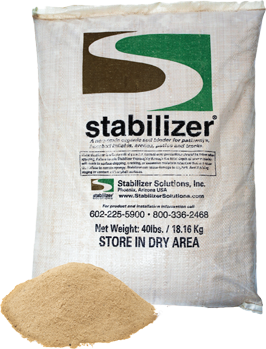
How does it work?
Integration - Blends into pore space of soil (Absorbent Sand Products Do Not)
Absorption - Absorbs 12 X its weight in water
Cohesion - Forms a cohesive gel that binds soil particles, keeping stability between soil particles during periods of excessive moisture
Balance - Maintains damp soil consistency longer when wet, and slowly releases moisture back into the soil in dry conditions
Stability - All of this equals a more stable footing for players
Hilltopper Waterless Technology
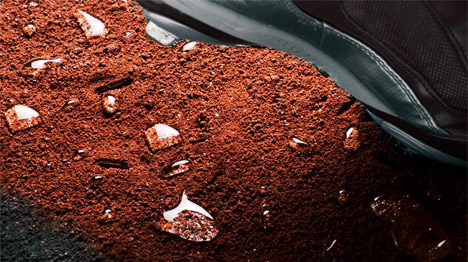
Creating an entirely new way to play on baseball and softball infields is no easy task. On running tracks, proper stiffness matched with the runner’s leg produces 3% faster running times and reduced injuries. On an infield surface, the proper stiffness, or load bearing strength required by the athlete is determined by the moisture content in the soil, ideally 4%-12% moisture content. Hilltopper Waterless Technology replaces needed moisture content with patented polymer technology. The coating works on the soil particle level. It coats soil particles with a hydrophobic polymer blend, while still allowing the soil particles to act like soil particles.
Products: Infield Mix | Warning Track Mix | Mound Clay
First things first, how do you evaluate an infield mix?
How high is the infield’s load bearing and shear strength?
Infields come in all shapes, sizes and colors. The first thing to consider is the size and strength of your athlete. Since larger athletes require increased support from the surface, an infield must be designed to provide (in engineering terms) the correct amount of load bearing and shear strength to support player movements. This is determined by the soil particle structure of the infield. Professional athletes require higher clay content to increase the load bearing and shear strength of the infield. While an infield too high in shear strength, may prevent athletes from gripping the infield (More on particle size below). Does your surface support your player’s needs?

How much downtime can you expect from weather?
The choice to support players with higher clay content must be weighed by the amount of downtime you are willing to sacrifice. A higher clay content infield is usually more difficult to maintain after the clay becomes destabilized as the moisture level rises. The ideal moisture content for play is between 4-12%. Can you keep your infield in that range after a storm?

How much watering and maintenance will it take to achieve the ideal playing surface?
Just like a broken clock is right twice a day, many materials can be playable at the perfect moisture content. This can be illustrated by a vehicle driving on a beach. It is much easier for the vehicle to drive over the wet sand than the dry sand. How much watering and maintenance time will it take to achieve that perfect moisture content in your infield? Do you have the resources to achieve this every day?
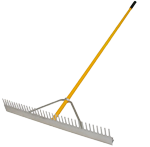
Soil particle structure and soil engineering
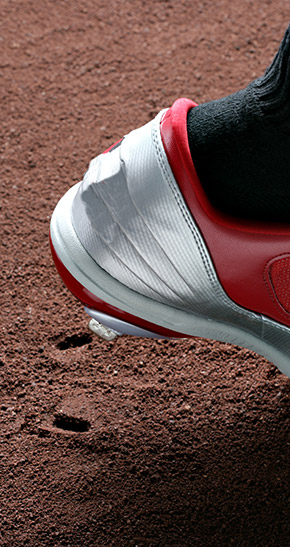
Soil particles are like the DNA of the infield. They decide how your infield will perform. Soil structure is the composition and arrangement of particles and pores, the open voids that occur between and within soil particles.
Clay is the only soil particle that has cohesion without water, a critical component. We need clay particles to give us load bearing and shear strength, but when the concentration of clay particles becomes too high, it can cause compaction and traction problems. This can limit the athlete’s ability to grip the infield. We must balance clay content with the correct percentages of silt and varying sizes of sand particles. The wrong percentages of these other particles can cause additional problems.
Soil particle engineering
Every infield we create is engineered to have the right composition of soil particles. In most regions, mixes can be adjusted depending on your level of use and the size of your athlete. These mixes are mechanically blended to ensure a consistent mixture throughout the profile.
Moisture changes the stability of any field
Why damp soil consistency?
It is easier to drive a vehicle across wet sand on a beach, than dry sand. This happens when gravity forces water molecules downward into the soil. Water molecules are attracted to soil particles. While being held by the soil particles, water molecules are also attracted to other water molecules, giving us cohesion. To take advantage of natural moisture binding from the surface tension forces of attraction, in our infield we need to achieve the ideal moisture content between 4%-12%, or a damp soil consistency. Having surface stability from this moisture range can significantly reduce injuries and potentially produce 3% faster running times for players.
In a very wet soil, above our ideal 12% moisture content, most of the water is retained in large pores or thick films around soil particles. Water molecules are not very close to a soil particle surface, therefore are not held very tightly by the soil solids. In this scenario, water has freedom to go where it wants. The water molecules separate clay particle bonds, destabilizing the infield and making it muddy.
In a drier soil, below our ideal 4% content, the water molecules are held more tightly in small micropores. In a low clay soil, the infield will be loose. We will not receive the benefit of the natural cohesion from the surface tension forces of attraction. In a high clay soil, the clay particles will pack closer to each other, creating a hard brick like surface that has too much shear strength.
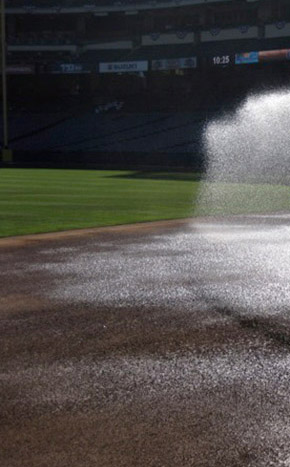
Increase Performance, Reduce downtime
Our goal is to build an infield mix with a soil structure that provides the athlete with the proper amount of load bearing and shear strength across a variety of moisture contents. Stabilizer Water Binding Technology essentially broadens the ideal moisture content window time frame by stabilizing soil particles during wet and dry conditions, while Hilltopper Waterless Technology eliminates the need for moisture altogether. Not only increasing play, but also conserving water resources. Ultimately, these technologies also help to reduce maintenance. This is best illustrated on professional spring training complexes where multiple fields must be maintained to professional standards across a variety of weather conditions.